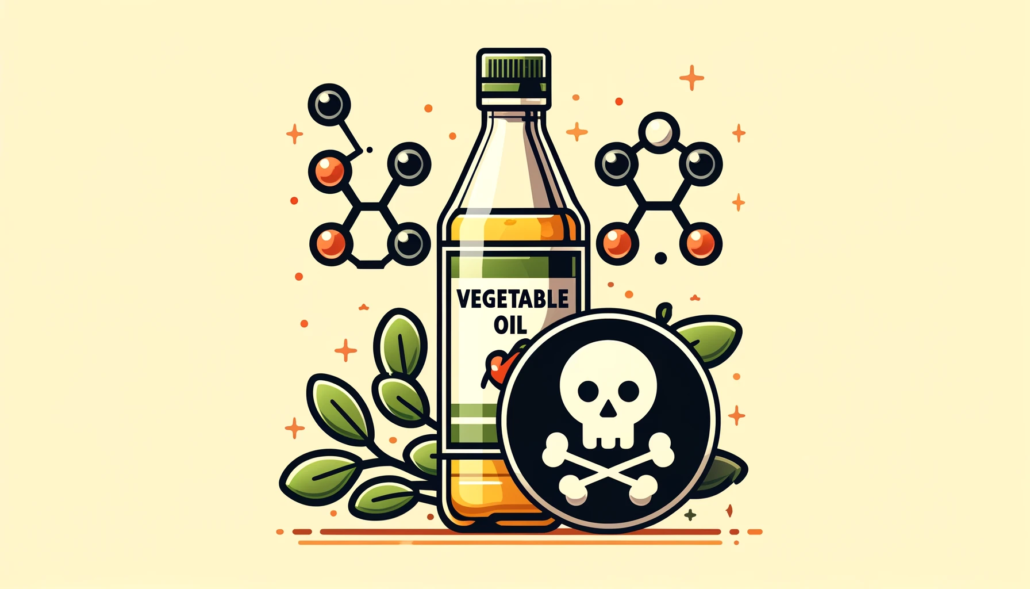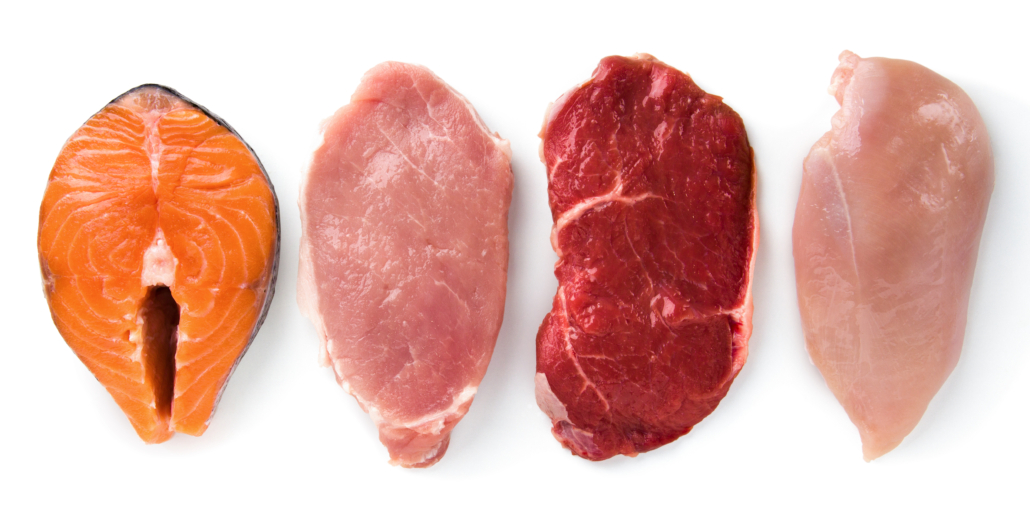We include products in articles we think are useful for our readers. If you buy products or services through links on our website, we may earn a small commission.
Is Bacon Red Meat? And Does it Matter?
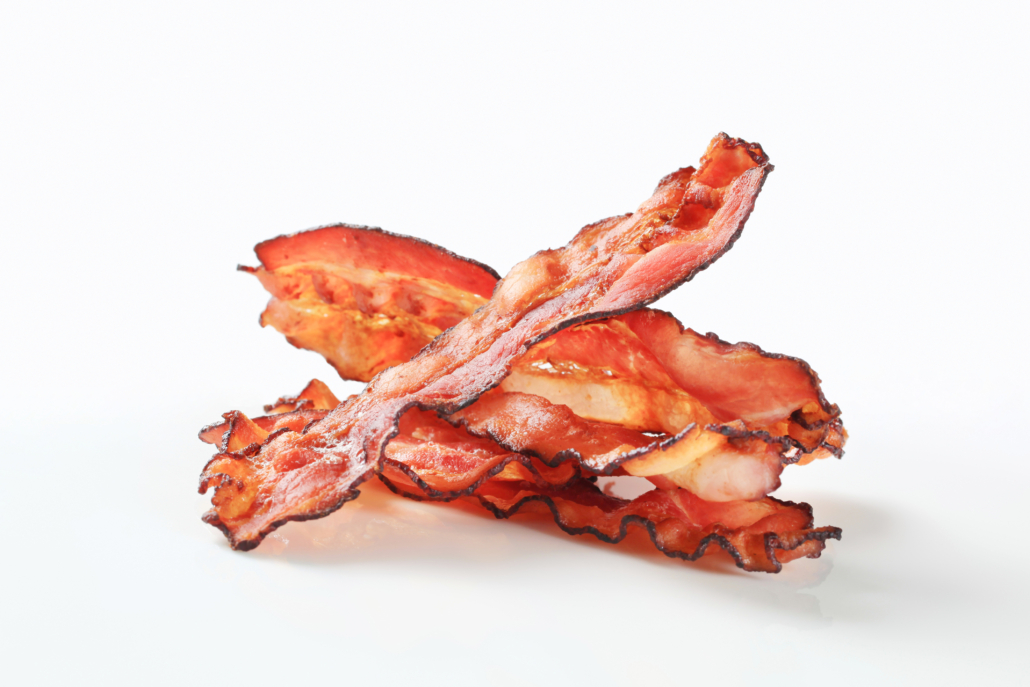
Bacon is the most popular meat in the world, with over 268 million annual bacon eaters in America alone. If you count yourself among them, you may be wondering if bacon is red meat.
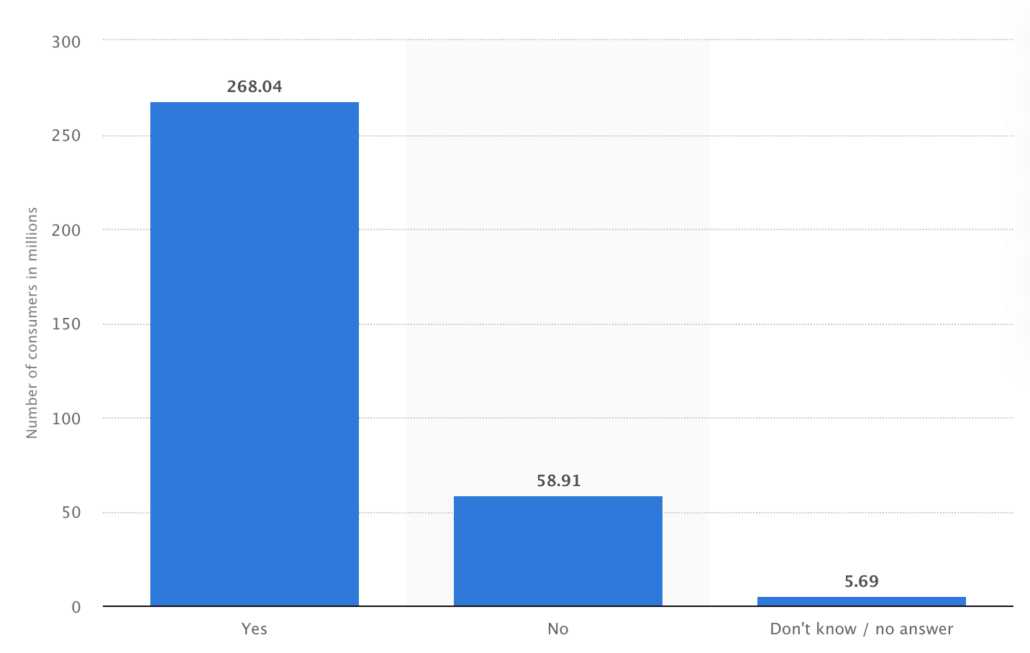
The question is understandable. Pork products have been considered both red and white meat, depending on the context. Recall the popular advertising slogan “Pork. The Other White Meat” from the 1990s. Yet bacon itself is one of the reddest-colored meats out there.
Furthermore, if you’re wondering if bacon is red meat, you probably have some concerns about the health impacts of eating red meat, which is important to clear up.
In this article, we’ll explore if bacon is red or white meat and reveal what modern science can tell us about the health implications of eating bacon.
Table of Contents
What is Bacon Anyway?
Bacon, AKA “meat candy,” is a pork product. It begins with a cut of meat called pork belly. Then it’s cured using various methods.
Most bacon-curing processes involve nitrites, salts, celery powder, smoke, sugars, and spices.
Curing protects bacon against bacteria and extends its shelf life. But more importantly, it gives bacon its delectable umami flavor and rich red color.
But does this make bacon red meat?
Is Bacon Red or White Meat?
Since bacon is a pork product, according to nutritional science, bacon is red meat.
But how “scientific” is this classification? And does it have anything to do with how bacon affects your health?
You may be surprised to learn that categories of red and white meat are remarkably inconsistent. They’re not based on any standardized measure of any single or combination of nutrients.
Scientists have confused the issue by using different measures, including pH levels and myoglobin presence. Myoglobin is a protein that contains iron, and when it combines with oxygen it produces red-hued muscle tissue.
Adding to the confusion, the scientific designation often diverges from its culinary classification.
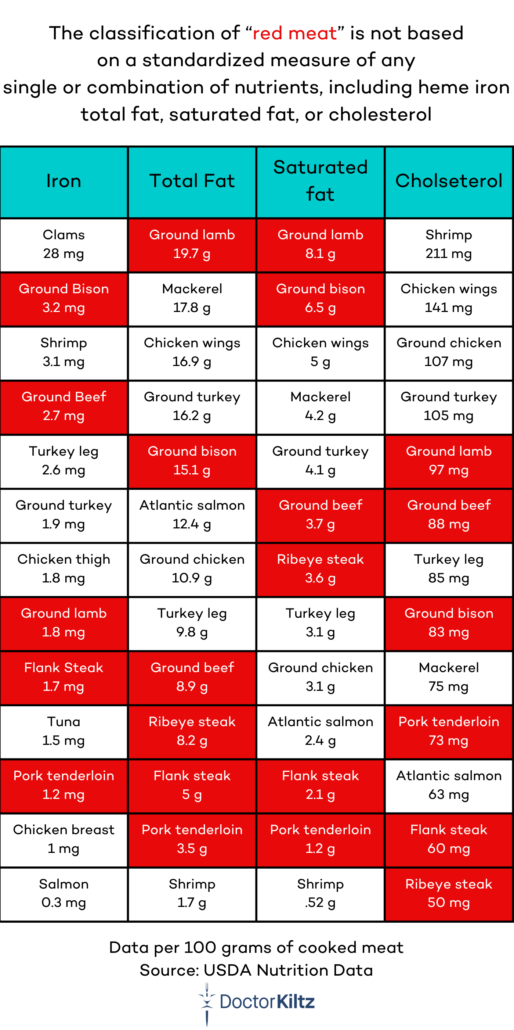
USDA Classification of Bacon
The United States Department of Agriculture (USDA) designates bacon as red meat.
And because the USDA says so, everyone else falls in line.
The USDA bases their classification on the fact that pork is livestock (like lamb, beef, and veal). Since all livestock is red meat, bacon is red meat.
It’s worth noting that, unlike other common red meats, including beef, bison, lamb, goat, and elk, pigs are not ruminant animals. This means that pigs do not have a digestive system that contains rumen that converts plant fibers into fatty acids.
Like humans, pigs are what they eat. Since most pigs are raised with extremely low-quality feed, they have an inferior fatty acid profile compared to ruminant animals. This makes choosing quality locally raised, pastured, and organic bacon a good choice.
Culinary Classification of Bacon
Chefs have a different take on bacon. Culinarily speaking, pork is generally approached, plated, and paired as white meat.
Adding insult to injury was the national advertising campaign “Pork, the other white meat.” Believe it or not, this campaign was launched by a part of the USDA called the National Pork Board.
If your trust in the USDA is faltering, welcome to the party.
But what, if anything, does this have to do with the healthiness of bacon? Not much, really.
Modern science tells us that fresh red meat is, in fact, one of the nutrient-rich and most powerful health-promoting foods on earth.
Is it Healthy to Eat Bacon?
Since the 1950s, red meat and saturated animal fats have been erroneously targeted as a public health enemy.
The institutional maligning of animal products is a complex story that we’ll just touch on here.
It was first spurred by bad science promoted by ambitious researchers. Then the bad science was amplified by industrial agricultural industries looking for ways to market their supposedly “heart healthy” vegetable oils and grains.
Thankfully, modern science is setting the story straight, one high-quality study after another.
Saturated Fat in Pork is Not Bad for You
Bacon fat was first targeted back in the 1950s because of its saturated fat content.
The theory at the time linked saturated fat intake with an increased risk of heart disease.
However, numerous high-quality show that saturated fat is not associated with heart disease, cancer, stroke, diabetes, and death from heart attack.
This above study from 2020 was co-authored by a consortium of researchers from leading medical schools around the world.
In this bellwether 2020 meta-analysis (the gold standard of nutritional research), researchers from universities around the world determined that eating unprocessed red meat and saturated fat from red meat is not associated with heart disease.
The researchers concluded, “Whole-fat dairy, unprocessed meat, and dark chocolate are SFA-rich foods with a complex matrix (of nutrients) that are not associated with an increased risk of CVD. The totality of available evidence does not support further limiting the intake of such foods.”
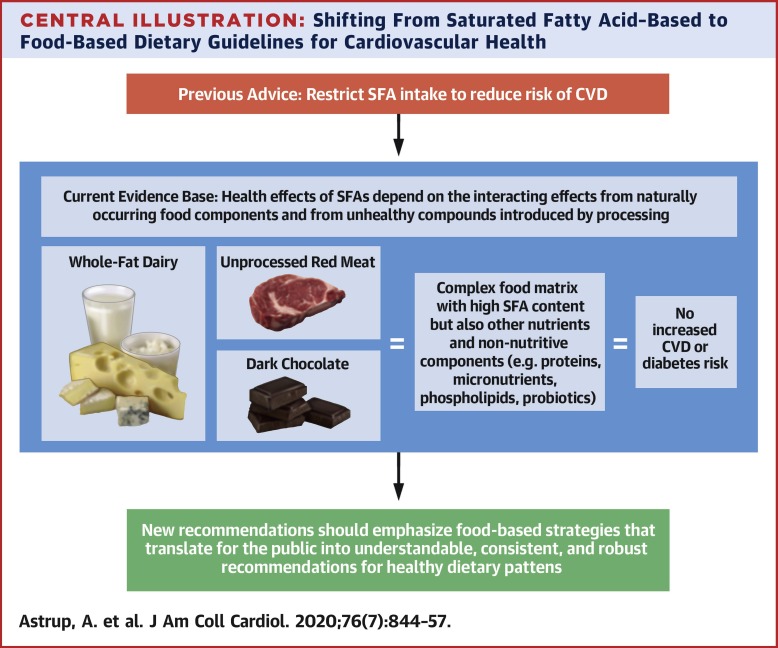
What About Processed Meat?
Indeed, bacon is not an unprocessed red meat. The curing “process” gives it a different classification among red meats.
This matters because “processed meat” has been linked to slightly higher incidences of colorectal cancer in one study. We’re talking about an absolute risk increase of .5% to .6%.
You might have heard this study reported as showing a 20% greater risk of colorectal cancer, but that “20% increase” is only a “relative” risk equal to 1/10th of 1 percent.
It’s also worth noting that this .1% increase only showed up for men. For women, processed red meat had zero effect on incidences of colon cancer.
Furthermore, this slight increase refers to all processed meats, including low-quality, highly processed cold cuts like bologna, etc.
Luckily more resources have been dedicated to looking into the institutionally promoted claims against all meats, including bacon.
One such body of research is the 2019 NutriRECS study. To date, this is the most comprehensive research on the effects of meat on health and how these health effects should inform international and national dietary guidelines.
The NutriRECS study analyzed data from 48 studies with over 5.7 million participants.
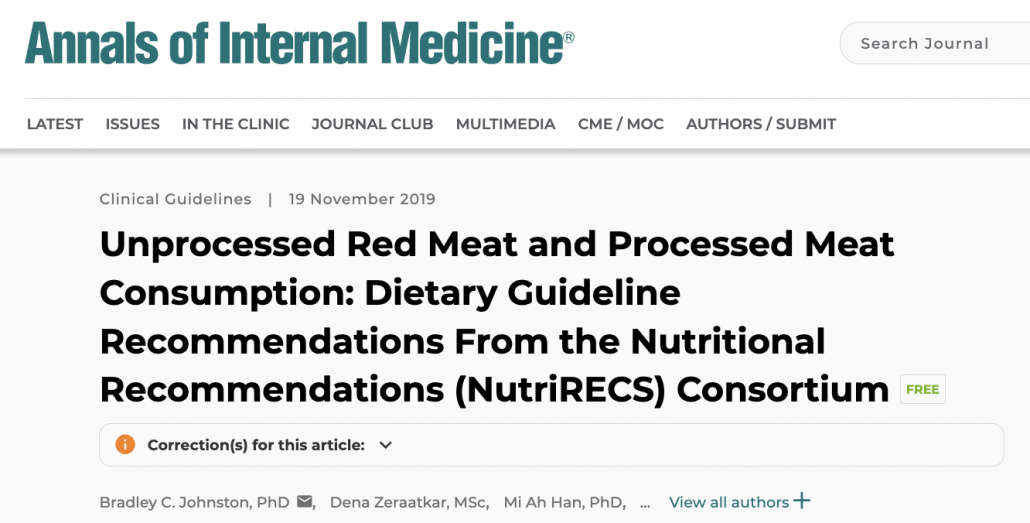
The researchers concluded that:
- Institutions, including the WHO, that use observational studies for their recommendations do not issue rigorous reviews of the studies. Observational studies should only be used as the basis for other higher-quality studies and not for recommendations. On their own, they cannot determine causation, only correlation.
- Reducing the intake of fresh red meat has no impact on our risk of prostate cancer mortality. Nor does eating fresh red meat increase incidences of breast, colorectal, esophageal, gastric, pancreatic, and prostate cancer.
- For processed meat, including bacon, there is “very weak evidence” that it is associated with a very small absolute risk reduction in overall lifetime cancer mortality, prostate cancer mortality, and incidences of esophageal, colorectal, and breast cancer (range, 1 fewer to 8 fewer events per 1000 persons with a decrease of 3 servings/wk), with no statistically significant differences in mortality for 12 additional cancer outcomes (colorectal, gastric, and pancreatic cancer mortality; overall, endometrial, gastric, hepatic, small intestinal, oral, ovarian, pancreatic, and prostate cancer incidence).
The researchers conclude that contrary to WHO guidelines, we should continue to consume both fresh red meat and processed meats.
You can read more on the questions of red meat and cancer here.
Nutrients in Bacon
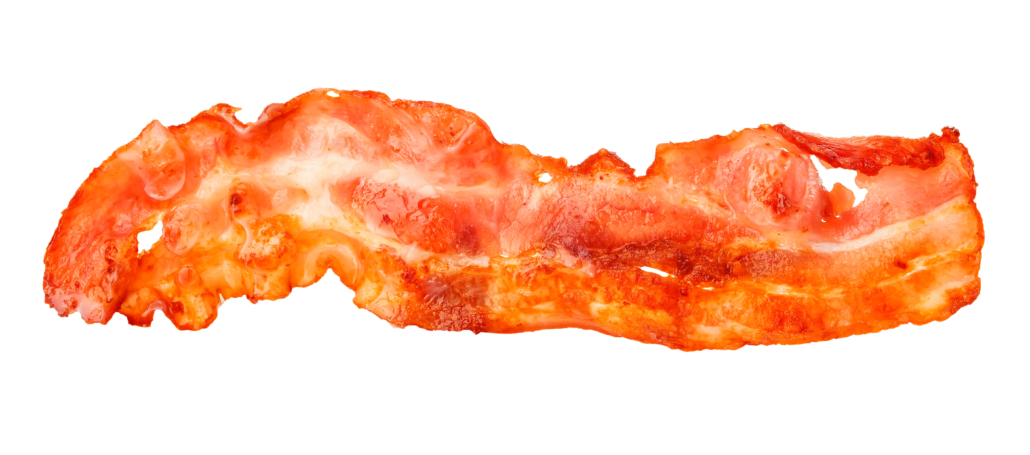
So now that we’ve answered the question, is bacon red meat? Let’s turn to what this red meat can provide in terms of nutrients.
| Nutritional Content per 112g (4 slices of bacon) | Amount | % RDA |
| Fat | 41.6g | |
| Saturated Fat | 14.1g | |
| Monounsaturated Fat | 17.8g | |
| Polyunsaturated Fat | 6.4g | |
| Omega 3 ALA | 309mg | 19% |
| Choline | 53.5mg | 10% |
| Vitamin B12 | .6mcg | 23% |
| Pantothenic Acid (B5) | .6mg | 12% |
| Niacin (B3) | 9mg | 56% |
| Riboflavin (B2) | .1mg | 7% |
| Thiamin (B1) | .3mg | 26% |
| Vitamin B6 | 0.3mg | 18% |
| Copper | .2mg | 22% |
| Phosphorous | 185.9mg | 15% |
| Selenium | 23mcg | 42% |
| Zinc | 1.3mg | 12% |
Health Benefits of Bacon
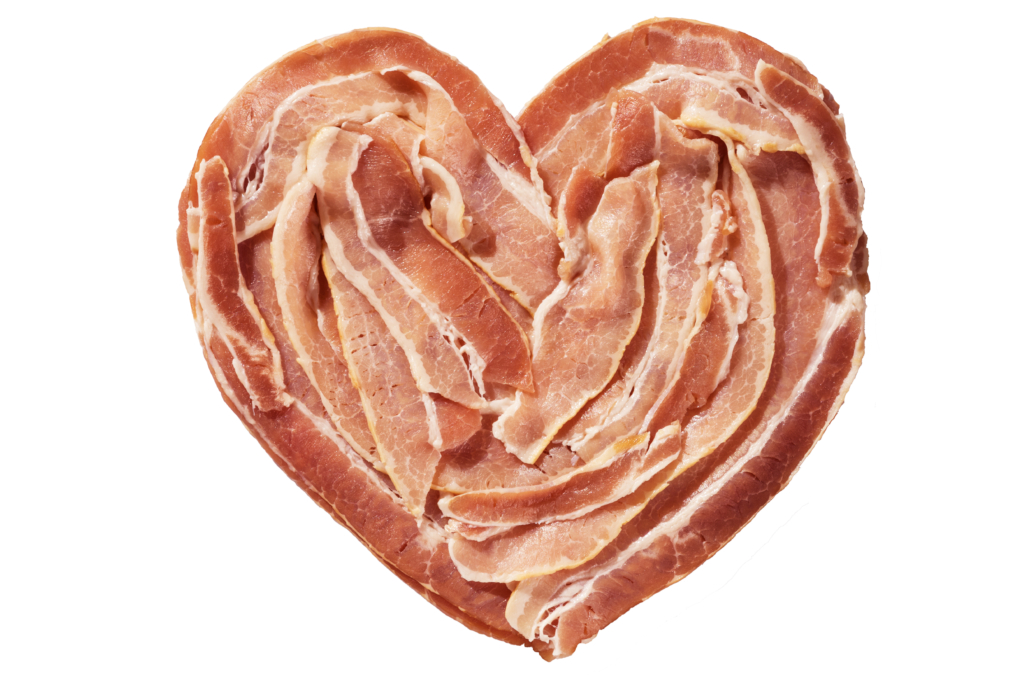
Though bacon is processed red meat, even small servings can provide an abundance of beneficial macro and micronutrients.
Complete Protein
Bacon provides a complete array of amino acids along with an abundance of healthy fats.
Together fats and proteins are remarkably satiating which reduces food cravings and feelings of deprivation that drive food addiction.
The proteins in bacon can also reduce symptoms of depression, depression, bipolar disorder, schizophrenia, and obsessive-compulsive disorder–each of which is strongly associated with amino acid deficiencies.
Healthy Fats
Almost half of the fat in bacon is “monounsaturated,” which is high in “heart-healthy” oleic acid.
Studies show that monounsaturated fats
The high-fat content in bacon makes it an excellent food for high-fat, low-carb diets like keto and carnivore.
Beneficial Nutrients
The fact that bacon is red meat puts it in a class of foods that have the greatest nutrient density on earth.
The significant amounts of B vitamins, zinc, choline, and selenium that you get from only four slices of bacon would take consuming pounds of various vegetables, and you’d still be missing out. This is a concept called “meat efficiency,” and it’s one of the many pieces of evidence that show that humans are supposed to eat red meat.
Is Bacon Red Meat?: The Bottom Line
Bacon is indeed red meat. Though unlike other red meats, including beef, bison, lamb, and goat, pigs are not ruminant animals. Without the ability to convert plant fibers into fatty acids, pigs and the bacon that comes from them have a different and slightly less nutritious fatty acid profile when compared to most other red meats.
That said, bacon packs a surprising abundance of health-promoting macro and micronutrients, making it more than a savory meat candy.












